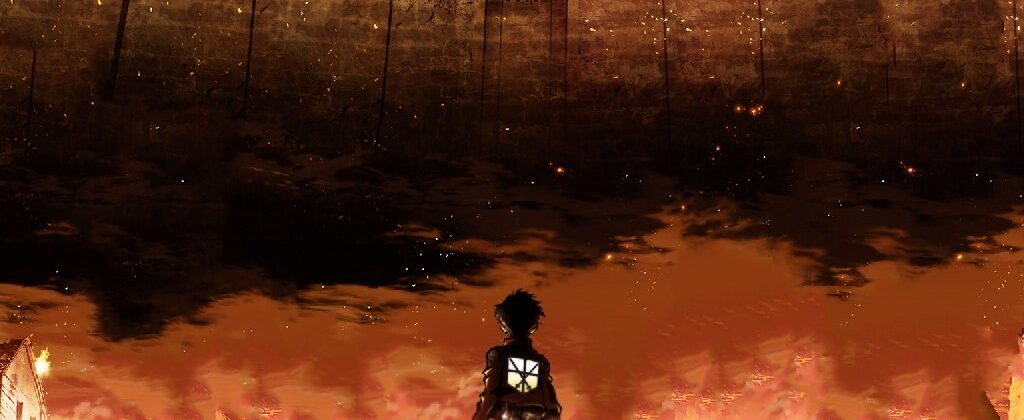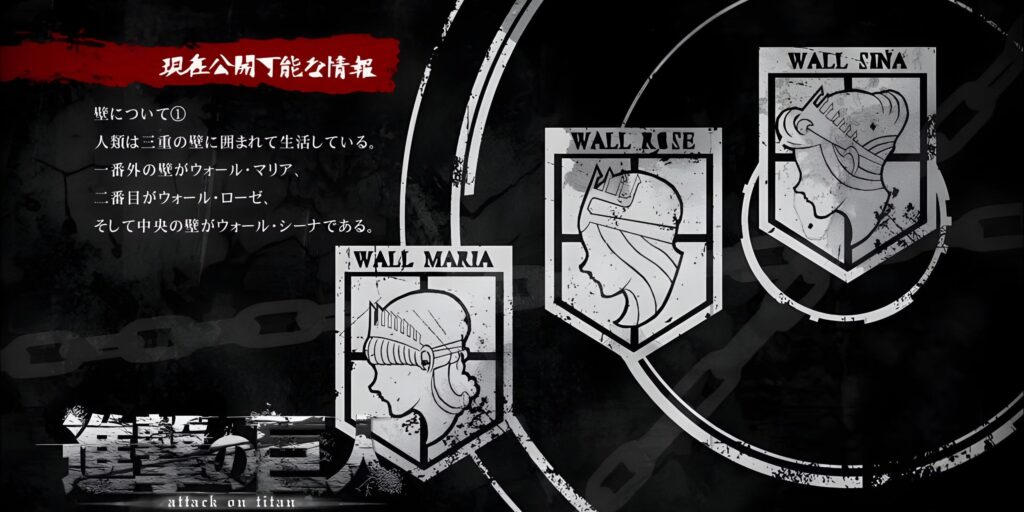
The Duality of Architecture in Attack on Titan
Ready for an adventure through towering walls and a maze of metaphors? Strap in, because today we’re catapulting straight into the epic world of Attack on Titan (AoT), or as it’s known in its original Japanese title, Shingeki no Kyojin. Created by the genius mind of Hajime Isayama and brought to life by the animation maestros at MAPPA studio, this is a tale that will have you questioning freedom, fate, and maybe even your snack choices. So grab your blueprints (or maybe just some popcorn), and let’s explore the many layers of this walled-in wonderland.
From behind our own cozy, titan-free walls (see what I did there?), we’ll dive into a world where the architecture is more than just a backdrop—it’s a whole metaphorical mood board. It’s a reflection of humanity’s deepest fears, hidden histories, and perhaps the worst urban planning choices since someone decided to build Atlantis underwater.
Hold onto your bricks, because we’re about to break down the real story behind the walls of AoT— where the Titans aren’t just lurking outside; they’re woven right into the heart of the city.
The Great Wall Trio: Maria, Rose, and Sina

First up, let’s introduce the main characters of this architectural drama: Wall Maria, Wall Rose, and Wall Sina. Imagine a city planning meeting where the primary concern isn’t green spaces but rather how many giant humanoid monsters can we keep out? The architects of this world didn’t just stop at one wall—they built three, each representing a different layer of society and, dare we say, a different psychological defense mechanism.
The walls are like a medieval onion of denial, protecting the core of humanity from not just the Titans but also from harsh truths about their own history. King Karl Fritz, a master manipulator with a flair for grand-scale architecture used the Founding Titan’s powers to construct these colossal barriers. The twist? They’re built with the hardened bodies of Colossal Titans. Yes, you read that right—these towering, steam-spewing giants were turned into a literal foundation of the city, adding a whole new meaning to the phrase “skeletons in the closet.”
Wall Maria: The Surface-Level Lies
Let’s begin with Wall Maria, the outermost layer and the first to fall (no thanks to that infamous Titan drop-kick). Wall Maria is the everyday reality, housing the working class who live closest to danger and furthest from luxury. It’s a symbolic first line of defense—a thin veneer of safety that shatters the moment reality comes knocking (or smashing) through.
When the Colossal Titan breaches Wall Maria, it’s a rude awakening for everyone—a moment of realization akin to discovering your cozy home is actually built on a fault line. The breach sends shockwaves, forcing the characters to face the hard truth: safety was always an illusion, a comforting lie they clung to like a child with a security blanket. It’s the anime equivalent of your childhood hero turning out to be a fraud—devastating, but also necessary for growth.
Wall Rose: Ingrained Beliefs Crumble
Next, we have Wall Rose, the middle child of this architectural family—often overlooked but crucial in maintaining the fragile balance. Wall Rose symbolizes the more ingrained beliefs that underpin society, the kind of deep-seated convictions that aren’t easily shaken. It’s the psychological safety net, a deeper layer of denial that starts to fray when Titans appear inside the wall.
The breach of Wall Rose isn’t just physical—it’s an ideological collapse. It’s as if the unthinkable has happened, like finding out the monsters under your bed were actually living there all along. This revelation is a societal gut punch, sparking panic and forcing people to confront the uncomfortable possibility that the enemy might not be so different from them. Wall Rose’s downfall is the crumbling of shared myths, and it throws the entire social order into chaos.
Wall Sina: The Core of Denial
And then there’s Wall Sina, the innermost sanctum, home to the elite and the powerful. Wall Sina is the gilded cage, the place where those at the top of the food chain live in ignorant bliss, insulated from the struggles of the outside world. It’s the ultimate psychological barrier—a fortress of self-deception that protects the ruling class from facing their own culpability in the system they maintain.
Wall Sina’s grand façade hides the uncomfortable truth that the walls are built on a foundation of lies and buried histories. When the secret of the Titans hidden inside the walls is revealed, it’s a collective breaking point—a shattering of the grand illusion that has kept the ruling class comfortable and the masses subjugated. It’s the final, crumbling layer of denial.
The Walls as Fossilized Trauma
The walls are not just defensive barriers; they are monuments to fear and repression. They symbolize how societies build their foundations on the skeletons of their past mistakes, hoping that no one will notice the cracks until it’s too late.
Let’s dig a bit deeper (pun intended) with a fresh take: the walls can be seen as fossilized trauma. Just as fossils are the preserved remnants of ancient life, the Titans encased within these barriers are relics of a forgotten history (memory wiped off), a visceral reminder of the fear and violence that shaped this world. The irony is thick: the very things people fear most have been turned into their strongest defense —proof that the past, no matter how deeply buried, has a way of shaping the present. Talk about poetic justice.
Breaking Down the Walls: A Moment of Awakening

When Eren ultimately destroys the walls, it’s not just an act of rebellion—it’s a declaration of freedom. It’s a messy, chaotic leap into the unknown, akin to kicking down the door of a stuffy, claustrophobic room and breathing fresh air for the first time. The destruction of the walls represents the collapse of self-imposed limitations and the breaking of psychological barriers that have kept humanity stagnant.
It’s the ultimate act of liberation, but with a price. In tearing down the walls, Eren also unleashes the chaos and danger they once contained, challenging the characters and the audience to confront the consequences of tearing down societal structures. It’s the ultimate act of defiance, a dismantling of the lies that have shaped this world for generations, and a challenge to face the raw, untamed truth.
Conclusion: The Architecture of Control and Revelation
In Attack on Titan, architecture isn’t just scenery—it’s a living, breathing narrative element that holds the entire story together. The walls are a testament to humanity’s desire to hide from its own fears, to create structures that protect but also imprison. They represent the power of historical narratives and the psychological barriers we build to keep our darkest truths buried.
And about those Titans—because if you think about it, anything can be used as a material for construction if you’re brave enough. I mean, who needs brick and mortar when you can just recycle the world’s scariest monsters and turn them into your foundation? Talk about innovative architecture! It’s like finding out your home is built on a mattress made of ghosts—unsettling, yet somehow impressively resourceful.
But in all seriousness, these walls represent more than just a literal defense against monstrous creatures; they’re a physical manifestation of the psychological and historical narratives that bind the society together. The walls trap not just people but entire generations of ideas and myths, keeping them locked away from the truth. The power these walls hold lies in their ability to create a narrative so strong that it becomes the very fabric of the community’s existence. For years, people believed they were safe, that their enemies were kept at bay, all thanks to these giant, hardened barriers. But in the end, the walls aren’t just defensive structures—they’re prisons built from the same fear that once threatened to consume them.
So next time you’re marveling at a city’s skyline or strolling past an ancient fortress, remember: every wall tells a story. And sometimes, the most interesting stories are the ones buried deep within the cracks.
Stay curious, question the walls around you, and maybe, just maybe, don’t build your foundations out of colossal monsters.



